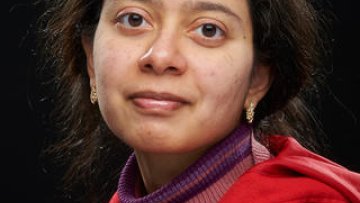15:45
Algebraic cobordism categories and Grothendieck-Witt-theory
Abstract
I will explain how Lurie‘s approach to L-theory via Poincaré categories can be extended to yield cobordism categories of Poincaré objects à la Ranicki. These categories can be delooped by an iterated Q-construction and the resulting spectrum is a derived version of Grothendieck-Witt-theory. Its homotopy type can be described in terms of K- and L-theory as conjectured by Hesselholt-Madsen. Furthermore, it has a clean universal property analogous to that of K-theory, localisation sequences in much greater generality than classical Grothendieck-Witt theory, gives a cycle description of Weiss-Williams‘ LA-theory and allows for maps from the geometric cobordism category, refining and unifying various known invariants.
All original material is joint work with B.Calmès, E.Dotto, Y.Harpaz, M.Land, K.Moi, D.Nardin, T.Nikolaus and W.Steimle.


